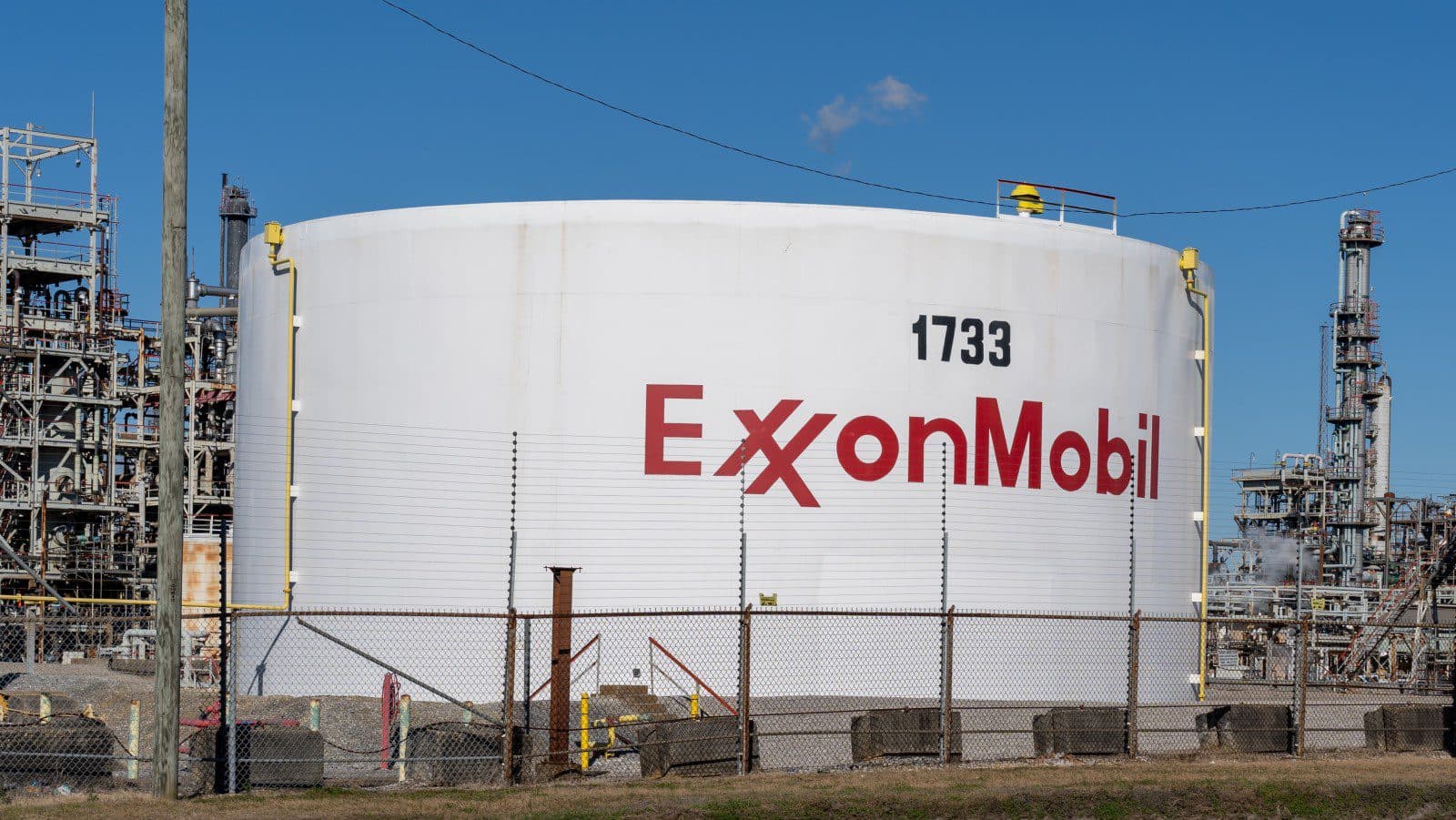Exxon Mobil Powering Bitcoin Mining Pilot Using Excess Natural Gas: Report
Exxon Mobil is hoping its pilot to utilize unspent natural gas will provide enough energy to power its Bitcoin mining operation

Exxon Mobil. Credit: Shutterstock
key takeaways
- Exxon Mobil is reportedly turning a profit by utilizing otherwise unspent natural gas to power a bitcoin mining operation
- The major oil producer has plans to expand its pilot to other countries including Germany and Argentina
One of the world’s largest oil producers is reportedly using excess natural gas to power Bitcoin mining operations in the US.
Exxon Mobil Corp. is undertaking a pilot program as part of an agreement with Crusoe Energy Systems, according to a report by Bloomberg on Thursday that cited people speaking under the condition of anonymity.
Bitcoin mining, which utilizes a proof-of-work, has long been criticized for its intensive energy cost involved in achieving consensus and is seen by some as particularly detrimental to the environment.
Exxon’s experiment aims to turn a profit in the crypto industry from otherwise unspent gas.
The pilot takes gas from an oil well in the Bakken Formation within the Williston Basin along the US/Canada border to run mobile generators powering crypto-mining servers on-site.
Exxon, which has been operating its pilot project since January 2021, utilizes up to 18 million cubic feet of gas monthly instead of burning it off due to a shortage of pipelines, per the report.
“We continuously evaluate emerging technologies aimed at reducing flaring volumes across our operations,” a spokesperson said in the report. Exxon is seeking to reduce the amount of waste through an activity known as “flaring” — the burning of natural gas involved in oil extraction.
The oil giant is considering similar initiatives in Alaska, Nigeria, Argentina, Guyana and Germany.
Proponents of the use of bitcoin mining equipment, powered by energy that would otherwise be wasted, see not only long-term economic but also environmental benefits of this approach. For instance, CoinShares’ CEO Jean-Marie Mognetti recently claimed that the “potential for miners to reduce the carbon footprint of flared and vented natural gas…is enough to completely offset all emissions or even have a positive net emissions impact,” for the mining industry.
Get the news in your inbox. Explore Blockworks newsletters:
- The Breakdown: Decoding crypto and the markets. Daily.
- Empire: Crypto news and analysis to start your day.
- Forward Guidance: The intersection of crypto, macro and policy.
- 0xResearch: Alpha directly in your inbox.
- Lightspeed: All things Solana.
- The Drop: Apps, games, memes and more.
- Supply Shock: Bitcoin, bitcoin, bitcoin.





